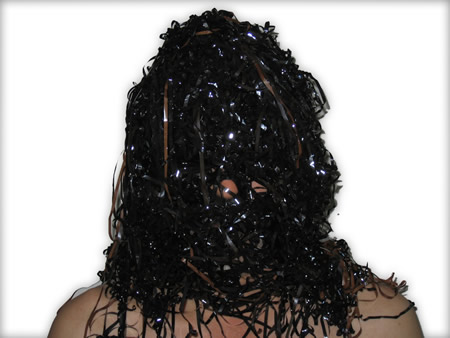 21-24 May, 2009 _ Kunsstour Maastricht During this year's
Kunsttour (Best Before)
in Maastricht I will be showing, working on and performing with the Found
Tapes Exhibition, daily in the Timmerfabriek (Boschstraat 5-9).
Also, on saturday 23rd, between 16h and 18h, together with Rébus and others
we will play the Hoge Brug, as part of Jodi
Rose's Singing Bridges project. Saturday evening/night we will be in
Kaspar König's ArtSppace Rondeel (Het Rondeel 2), where Rébus will
install a version of Alvin Lucier's classic 'Music
on a Long Thin Wire' (1977). On sunday 24th I will contribute opinions
and found sound to the 'expert panel' on Houdbaarheid en Kunst
(art and sustainability), between 16h-18h in the Timmerfabriek.
21-24 May, 2009 _ Kunsstour Maastricht During this year's
Kunsttour (Best Before)
in Maastricht I will be showing, working on and performing with the Found
Tapes Exhibition, daily in the Timmerfabriek (Boschstraat 5-9).
Also, on saturday 23rd, between 16h and 18h, together with Rébus and others
we will play the Hoge Brug, as part of Jodi
Rose's Singing Bridges project. Saturday evening/night we will be in
Kaspar König's ArtSppace Rondeel (Het Rondeel 2), where Rébus will
install a version of Alvin Lucier's classic 'Music
on a Long Thin Wire' (1977). On sunday 24th I will contribute opinions
and found sound to the 'expert panel' on Houdbaarheid en Kunst
(art and sustainability), between 16h-18h in the Timmerfabriek.
Petit tour de table, grande bouffe ... [i]
may 18, 2009.
The Kingdom of Belgium surely is a most curious among the pearls in the chain that over the past couple of decades has been strung into a United States of Europe. Belgium is a small country, but hopelessly divided because of the ineradicable mutual distrust that opposes the two main linguistic groups making up its population: the (sort of) Dutch speaking Flemings, and the Walloons, who speak French. Over the years this has led to an increasingly complex system of government for three distinct regions: the Flemish region, the Walloon region and the Brussels-Capital region.
Brussels, the de facto capital of the European Union, officially is bilingual. But in the more than 30 years that I have frequented the city I only rarely have met native French speaking Brusseleers who could speak or understand more than a mere handful Dutch words and phrases. As a frequent visitor (but always a 'foreigner') I experienced how over the years 'power' gradually shifted from the French- to the Dutch-speaking Belgians, while the sense of conflict and tension continued to be - increased, even. Though in Brussels the Dutch and French speakers are inextricably mixed, the large gap between the two parts of its population only seems to widen.
...
In Vorst/Forest, one of the municipalities of Brussels-Capital Region, from the end of the 19th until mid 20th century, prospered the Wielemans-Ceuppens Breweries, set up on a large property between the avenue van Volxem and the railway tracks, not far from the Brussels-South railway station.
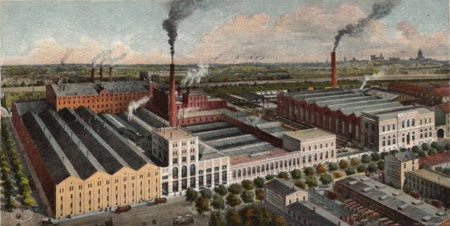
The above drawing that I found on the web, but that was not dated, must depict the state of the rapidly evolving and changing brewery installation sometime early 20th century, as it lacks (on the left side) the very large brew hall designed by Adrien Blomme, which dates from 1931 and is a fine example of the modernist industrial architecture of those years (see the picture below).
With the Second World War the bloom and expansion of Wielemans-Ceuppens came to a grinding halt; business stopped flourishing, and then gradually went downhill. In 1980 the Wielemans brewery was liquidated, and the activities at the Vorst/Forest factories were step by step scaled down. In the fall of 1988 they stopped completely.
Despite the undeniable historical and heritage value of buildings and equipment, the site for many years was the subject of ever changing plans by ever changing owners, projects that were started and then again abandoned... While the remnants of the plant continued to deteriorate, the Blomme building and the older brewery buildings constantly were threatened with demolition. The site became something of an urban blight, with what remained of the buildings run down and vandalized. In 2001 the Brussels Capital Region began an expropriation procedure, and became the new owner of the former brew halls, with the idea of preserving that what was left, and giving the buildings, once restored, a socio-cultural destination.
Here's a Google satellite view of how the former brewery site looks now. Most of it is wasteland, but on the left you see the restored Blomme building. Then there is a gap. And after the gap, there's an older former brew hall, flanked by what used to be the machine hall.
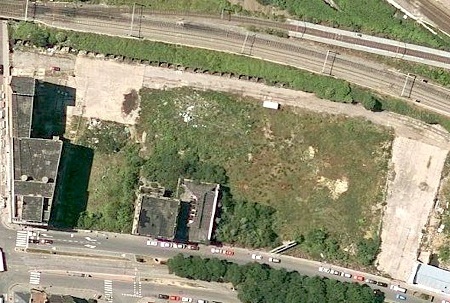
When end march I spent a couple of days of sonic residence together with Jean-Jacques Duerinckx in the second of the two restored buildings, I could not help but gradually starting to see these two big buildings (though the Blomme one is significantly larger than the other) - side by side, but separated by that large gap - as a faithful image of the virtually split Belgian state.
Below is a picture of the restored Blomme building, which in May 2007 opened its doors again as Wiels, a brand new & proud Brussels Center for Contemporary Art. If you look closely, through the huge ground floor windows, you can see the shine of two of the remaining majestic copper brew vessels ... I stepped in once or twice, and even though I did not (yet) have the time to visit in extenso, the place looks amazing and appears to be very well-funded. With its little art-bookshop and (pricey) cafeteria, its setting (though maybe not its content) almost makes it look like a Belgian Palais de Tokyo ...
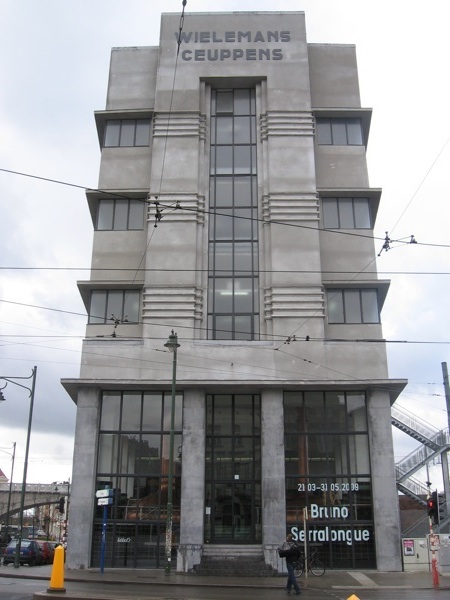
When asked though, several of my native French speaking friends grudgingly complained that (notwithstanding, mind you, the official policies and bi-communal funding) the Wiels was an obvious and too costly Flemish thing, primarily meant to increase the cultural prestige of the Dutch speaking community. It was almost as if they meant to say that, after the gap, the French community had been given the second building, crammed with ancient and rusty machinery, as a mere sop ... But then of course also Le Brass (Forest, Centre Culturel) is a bi-communal and bi-lingual thing, and though a 'Cultural Center, it is not meant to function as a center for contemporary art. All just goes to show how complex the relation of Belgian/Brussels (cultural and other) institutions vis-à-vis the population is, and how deep these sentiments run. And though no one would ever in whatever way officially endorse such a view, it is difficult not to see the two Wielemans building separated by a wasteland gap as an urban metaphor for the state of affairs in the capital of Europe ...
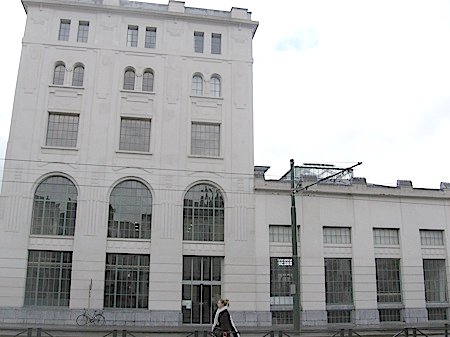
But nevermind politics and that state of affairs, I fell in love with the Wielemans' machine hall the first time I saw it, and I am absolutely enchanted that we were given the opportunity to dwell and work among them, still in their deteriorated, rusty and rough state, covered by the graffiti that came upon them during their years of neglect. They probably are not going to remain in precisely that state, as apparently industrial archeologists are studying and taking stock of the installation, and plans are to restore all of it, at least visually, removing the rust and putting on fresh colors and paint.
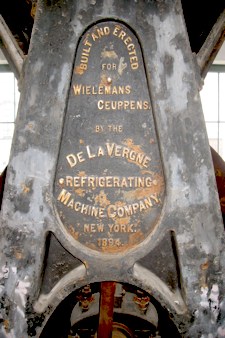 |
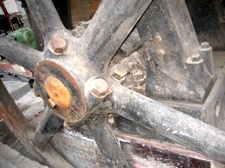 |
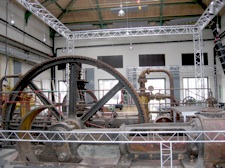 |
We worked three days in Le Brass, preparing a performance on the evening of march 27th, on which we planned to take the audience for a little tour of the place. It all would start with a short prelude: a simple sound-installation in the catacombs downstairs. From there one would be led up into one side of the machine hall, for a first scene ('table' as in 'tableau'), set next to one of the gigantic flywheels you see in the pictures.
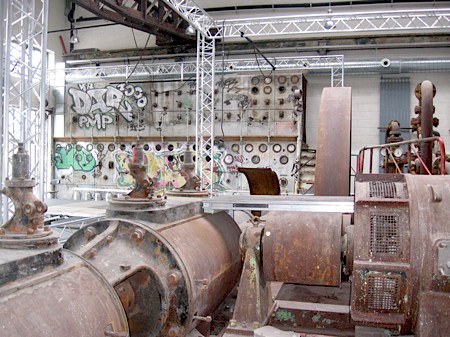
A second scene would follow at the opposite side of the hall, there set against a wondrous machine 'built and erected for Wielemans Ceuppens by the De La Vergne
Refrigerating Machine Company, New York' in 1894.
We then would go back down into the other building, for a finale in the Brass' entrance hall ...
next: A Table! au Brass (sketches)
tags: Brussels, A Table!
# .308.
smub.it | del.icio.us | Digg it! | reddit | StumbleUpon
comments for Petit tour de table, grande bouffe ::
|
Comments are disabled |